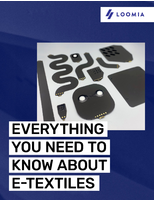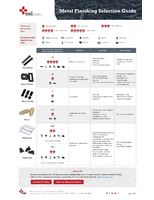PCB - an Important Piece of Puzzle in the LED Thermal Management
Objective and Scope
Thermal management is critical to the long life of the LEDs used in a Solid State Lighting (SSL). This paper demonstrates where Printed Circuit Board (PCB) stand in a chain of LED thermal management, types of the PCB used, and its effectiveness on reducing LED junction temperature.
Overview of LED and heat
Although LED light sources are more energy efficient than incandescent, they have many critical differences. One Major difference is the way heat is generated and dissipated in to the environment. LED’s P-N junction is located between the anode (+) and the cathode (-), it’s made of the semiconductor material. Under electrical power, movement of electrons across P-N junction causes a release of energy and the emission of photons. Photons are in the ultraviolet band which is beyond the visible spectrum of the human eye, however, when the photon hits a phosphor coating on the lens of the LED, it excites and causes the phosphor to emit light in our visible spectrum.
What is Heat and how do we manage it?
Heat is energy. Energy by the law of physics can be transformed but never disappears. Because of this rather than “cooling”, we need to think of thermal management in terms of moving heat energy away from the P-N junction to a remote location. This process is called “heat transfer” or “thermal transfer. Heat transfer can happen by combination of three phenomenons. Thermal conduction, thermal convection and thermal radiation.
Thermal Conduction: is a mode of transfer of heat energy within and between bodies of matter due to a temperature gradient. Basically, the transfer of thermal energy from one molecule to the next. There is no physical movement associated with conduction; it is an exchange of molecular energy. Heat spontaneously tends to flow from a body at a higher temperature to a body at a lower temperature in effort to equalize thermal differences.
Thermal Convection: is the collective movement of ensembles of molecules within fluids such as liquids, gases. Thermal convection should be thought of as a fluid process.
Thermal Radiation: is electromagnetic radiation generated by the thermal motion of charged particles in matter. All matter with a temperature greater than absolute zero emits thermal radiation.
Though LEDs are much more efficient than any traditional light technology, the light efficiency of these chips are up to 20% to 30% depending on the semiconductor material, current they are running at and cooling system’s efficiency. Despite the high efficiency of LEDs, approximately 70% to 80% of the electrical power input is converted to heat.
LEDs hardly radiate any heat in to the environment. This means that all of the heat generated by the LEDs must be conducted away from the source by physical means. If the heat is not conducted away from the source, and the LEDs get too hot, the phosphor converting photon light to visible light cannot function properly and can be permanently damaged, causing the light to change to an unacceptable color (color shift), affects the overall quality of light output and longevity of the LED. Furthermore too much heat will limit the lifetime of the LEDs. Ensure that the product you select has appropriate heatsinking in order to avoid color shift and shortened lifespan.
Selecting the Right Thermal Solution
To avoid LED thermal run-away and permanent damage, excellent heat conduction needs to be taken into account throughout the entire LED system. LED system includes LED package (chip), substrate or PCB, thermal interface material (TIM) located between PCB and heatsink and a heatsink.
For this paper we will focus on to PCB (or substrate) portion of the LED system. The overall goal is to achieve low thermal resistance. LEDs at the package level already have pre-defined structure and associated thermal resistance designed by the package manufacturer. After LED package, printed circuit board is second in line within the conduction thermal path. It is important to analyze and understand PCB structure, material and its thermal property to optimize conduction heat transfer.
Fig.1 is a sectional view of a most common printed circuit board used in the LED application. Basically it is a three layer structure; top layer, middle layer and a bottom layer. Top layer is a circuit layer, middle layer is a dielectric layer and bottom layer is either thin copper layer (in case of FR4 pcb) or thick metal layer (in case of MCPCB). LEDs are mounted on to the top circuit layer.
Selecting the right PCB that has least thermal resistance
Printed circuit board is one of the important pieces of the puzzle when it comes to optimizing LED thermal management. There are several types of PCB types considered for the LED application depending on how much heat dissipation is required. Metal core PCB and standard FR-4 pcb with thermal vias are commonly used circuit board materials to dissipate heat from a LED. LEDs are surface mounted to a printed circuit board. Therefore, the board is the first level of thermal dissipation after the LED chip itself. For many of the low power LEDs, ordinary FR4 substrate with thermal vias provides acceptable performance. But for medium to high power LEDs FR4 substrate is not good enough and more often metal core pcb (MCPCB) is used. Metal core pcb (often known as aluminum pcb) uses a thermally conductive dielectric layer (Layer-2 of Fig.1) with base metal aluminum or copper.
There have been a lot of advances in recent years in the field of Metal core PCB (MCPCB). With the prospect for high growth in LEDs, many companies are trying to develop the best thermal substrate solutions and market them for LED applications. There are handful of new MCPCB material manufacturer that exist and many new coming-up in the market place but all are offering simple variation of two things: thermal conductivity of the dielectric and a thickness of the dielectric. Focus has been how to improve thermal performance of an existing dielectric material.
Table-1 shows various thermally conductive dielectric available in the market. Thermal conductivity values ranges from 1.0-4.0 W/m.K and typical thickness of these dielectrics are 70um-150um. Based on our evaluation of various MCPCB materials we discovered one fact “thermal conductivity and a thickness of the dielectric might look comparable on a data sheet but they do not perform same when it comes to transferring heat from the LED”
It is fair to say the key to the performance of MCPCB lies in its dielectric layer. Even though thermally conductive dielectric has higher thermal performance compared to standard dielectric material it is still a weakest link in the conduction thermal path in the MCPCB. Is there a way to eliminate dielectric thermal resistance completely out from the thermal path?
Metal Post MCPCB – Direct Thermal Path solution
LED manufacturers are continuously pressing an envelope towards miniaturization of LED packages. This allows Luminair manufacturers to design more LEDs in a smaller space i.e. high heatflux. The goal is to achieve rapid heat spreading directly below the LED. There are two types of thermal management in solid state lighting (SSL), Active thermal management (or active cooling) and passive thermal management (or passive cooling). Active cooling is used where passive cooling cannot move heat at a high enough rate to support thermal management needs of a given device. Also there are disadvantages to active cooling in SSL’s. One, few if any active cooling devices are proven to match the 100,000 plus hours expected of a SSL product. Additionally, the noise they introduce and the power they consume is undesirable.
Thus, passive cooling is clearly preferable when sufficient heat exchange can be facilitated without the need for active cooling. Passive thermal management relies on the thermodynamics of conduction and convection without an introduction of additional energy to enhance thermal transfer. Heat conduction starts at the junction and the heat-energy travels through a series of components to end at the convection surface. A goal of the SSL design engineer is to adjoin these components in a manner that maximizes the thermal conductivity between the junction and the convection surface. How do we achieve best passive thermal path? It can be done by reducing number of materials in the thermal path-ways to a minimum (i.e. reduce interfacial thermal resistance) and by using higher thermally conductive materials.
As described in a Fig.4, a localize “metal post” approach can take traditional MCPCB to a next level by eliminating use of a dielectric completely from a thermal path. This creates 100% metal to metal contact between thermal pad of an LED chip and a base metal of an innovative MCPCB.
Test Data and conclusion
In this test set-up Nichia N219 LED was mounted on to three different types of PCBs to measure its ability to dissipate heat. (a) FR4 PCB with thermal vias, (b) Metal core PCB (MCPCB) and (c) “Metal Post” MCPCB. The Infrared picture displays the thermal dispersion pattern between the three types of PCB, after the LED have been powered for 25minutes. As is easily observable from this picture FR4 PCB have highr thermal resistance than metal core PCB and metal core PCB has higher thermal resistance than “metal post” MCPCB.
Conclusion
Due to higher thermal resistance of the FR4 pcb it is primarily used for low power LED application where high heat dissipation is not required. MCPCB has much lower thermal resistance than FR4 and it can be used for medium to high power LED applications. Improved version of MCPCB can be appropriate for the high power LED or High heatflux applications.
Without any doubt, selection of a “printed circuit board type” does matter when it comes to LED thermal management. To find the optimum result, one has to balance the reason to choose right pcb and the right concept.
BIO:
Kris Vasoya is a founder and CTO of the SinkPAD Corporation, Placentia, CA. Specifically he works on new processes & materials solutions and technologies to enhance the thermal performance of the traditional printed circuit boards. His expertise is in the thermal management, manufacturing processes and testing.
Mr. Vasoya received his B.S. in Mechanical Engineering from Sardar Patel University, Gujarat, India 1994. He has invented carbon composite based thermal management technology for the complex multilayer printed circuit board. He has been awarded more than dozen patents worldwide.




